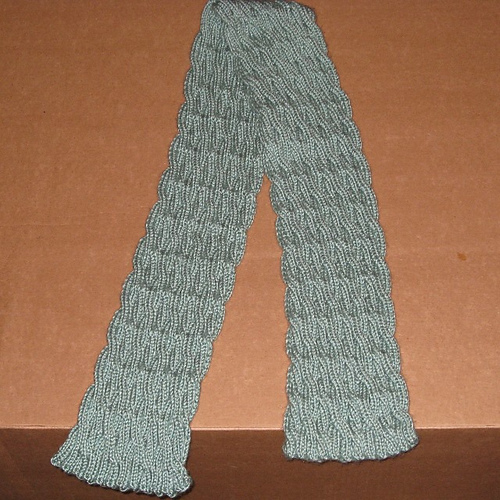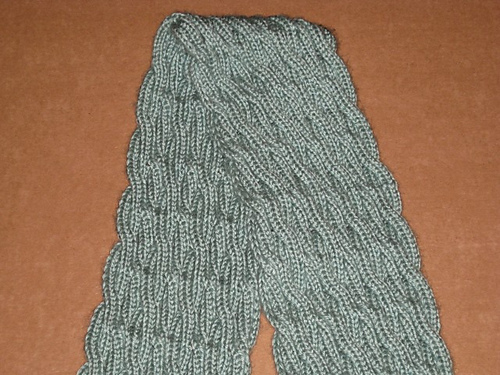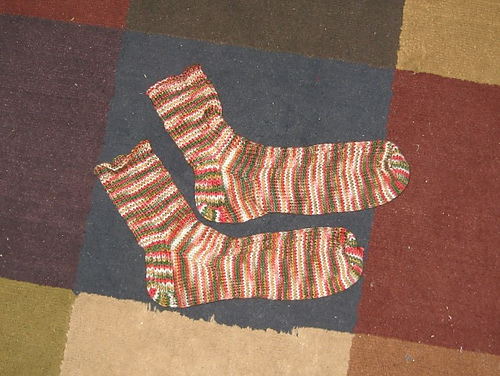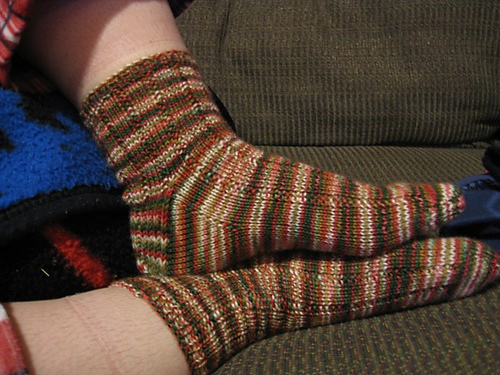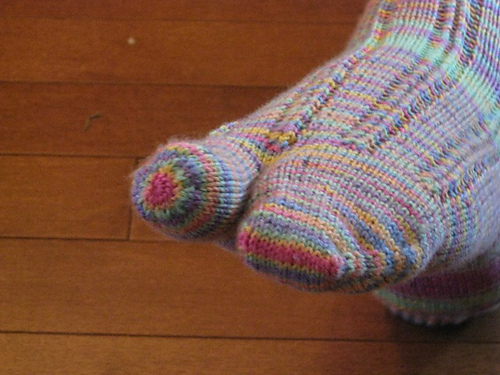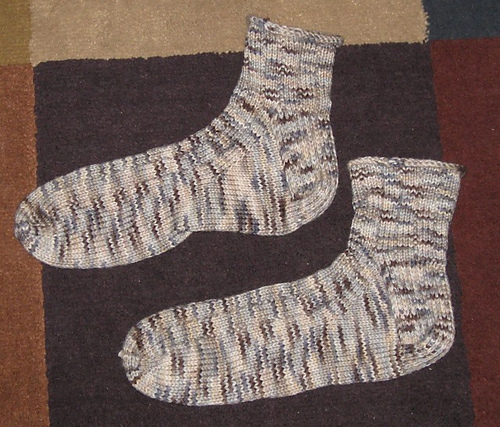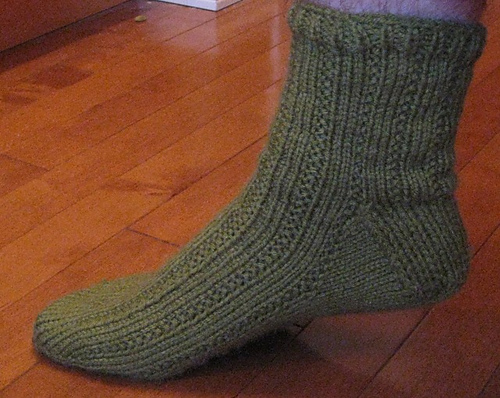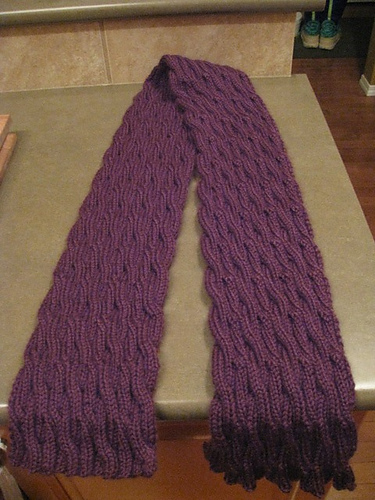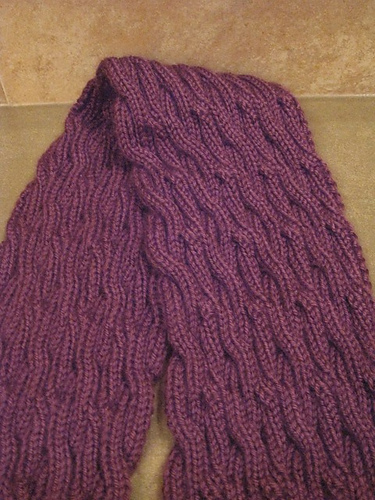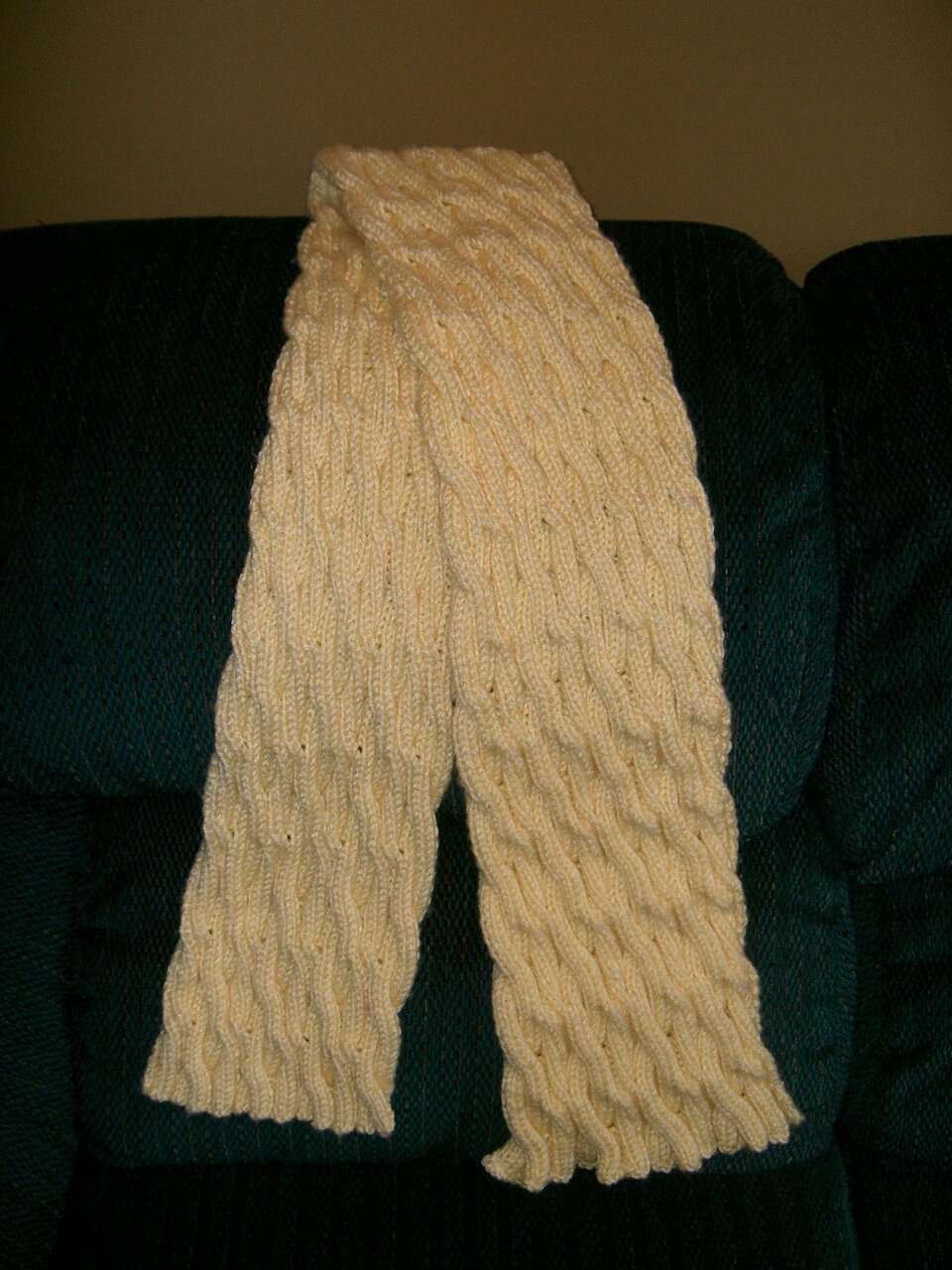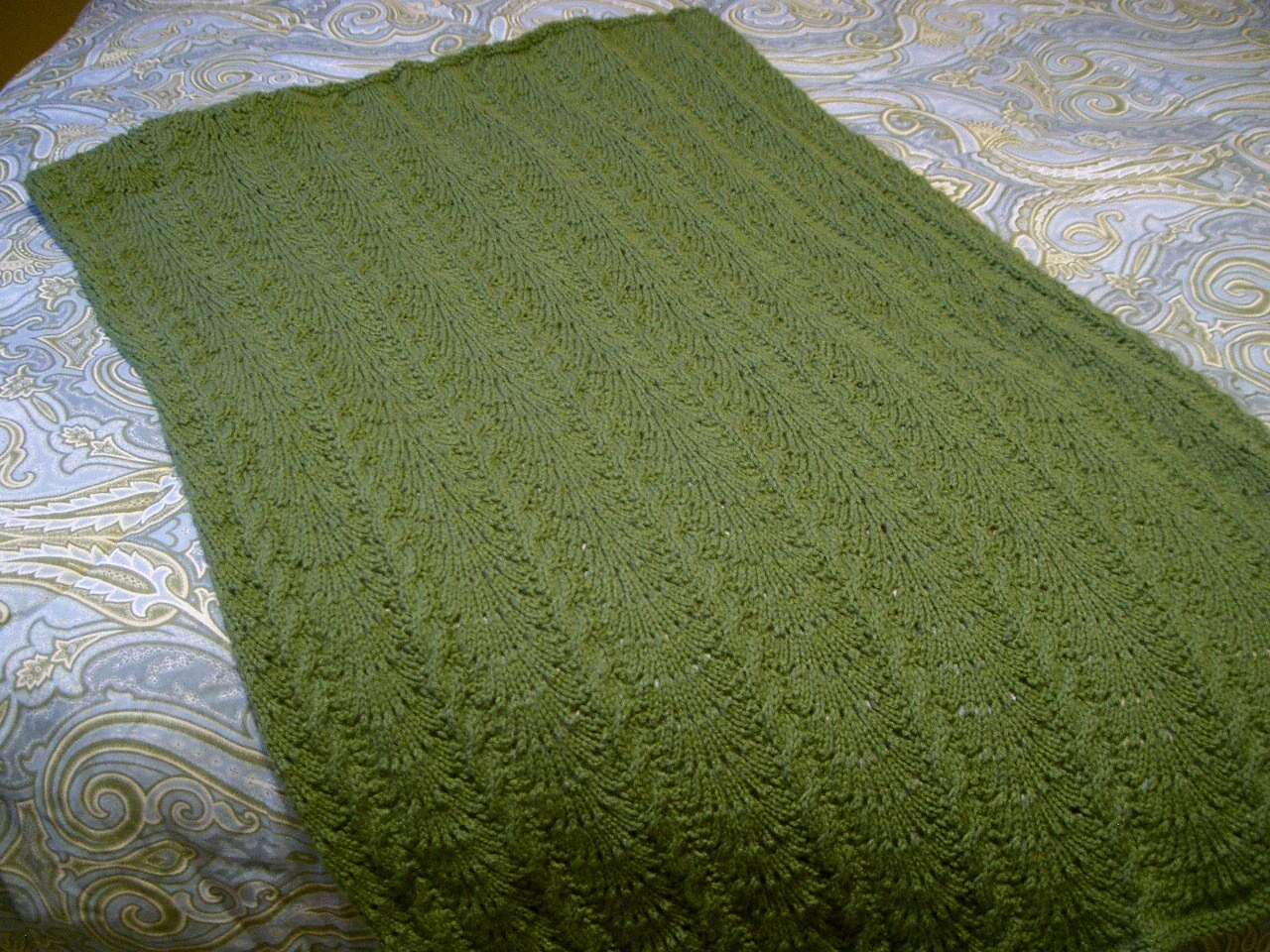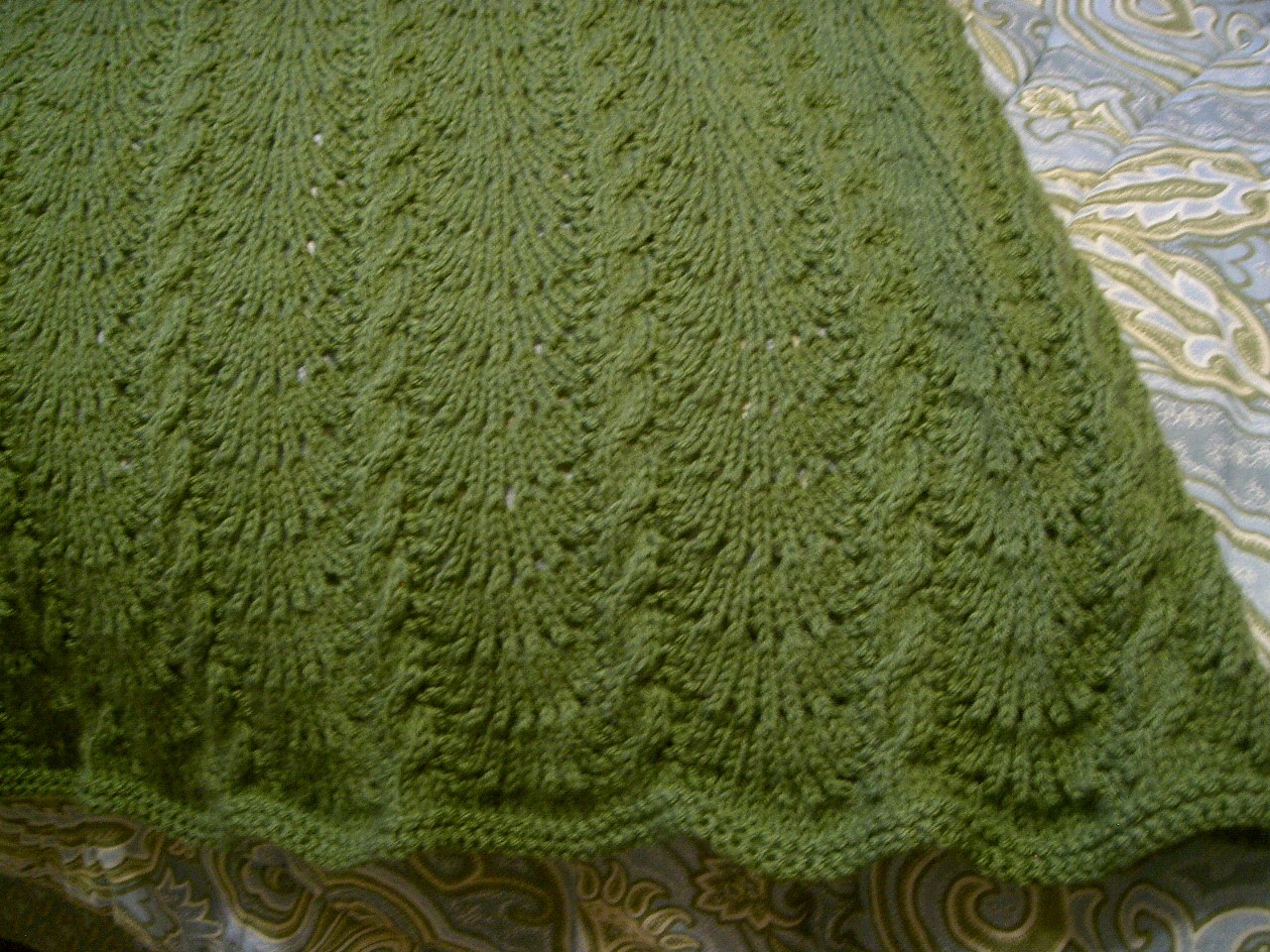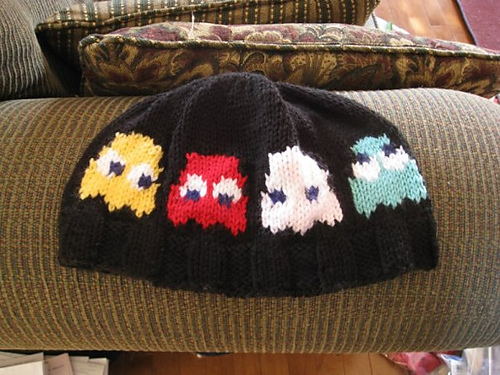- (https://b-ark.ca/ksKKwg)
I’m riding in the 2025 Enbridge Tour Alberta for Cancer, raising money for the Alberta Cancer Foundation, and have so far raised $2,744, exceeding my $2,500 goal and surpassing my 2024 effort!
Help me by donating here
And remember, by donating you earn a chance to win a pair of hand knitted socks!
- (https://b-ark.ca/_gO604)
Yet another crack at this cable scarf pattern, it knits up thick and chunky and really shows off the shine of this yarn.
- (https://b-ark.ca/6EuYye)
Yet another early sock attempt, this is one of those early pairs that taught me never to use straight merino for socks…
- (https://b-ark.ca/ueAGMm)
This is a bit of an experiment, altering a traditional toe-up toe to create a separate space for the big toe. And it worked out alright!
- (https://b-ark.ca/MQg0UW)
Another crack at this pattern and one of my earlier sock attempts as I got the hang of things.
- (https://b-ark.ca/aQ4__K)
Using Thuja with some gifted Raven Frog yarn, this time Alder Bark, to knit up another pair of warm, comfy, and very fragile socks…
- (https://b-ark.ca/4egkaI)
It’s been a while, but I assume this is my first pair of socks after previously trying and failing to make socks…
- (https://b-ark.ca/EqQiie)
Another cabled scarf using Here and There Cables, this time for my mom!
- (https://b-ark.ca/S_0g0k)
Here and There again, this time for Michelle in a nice creamy yellow!
- (https://b-ark.ca/4QsEuE)
A fairly traditional pattern on this afghan, the yarn lends itself well to this simple cable-and-scallop design.
- (https://b-ark.ca/IyGaqi)
A custom Pacman graphic design in Intarsia. This thing is a pain to knit, what with all the colour changes, but it looks great!
Intarsia in the Round
Yeah, another knitting post, and so soon, too! Okay, so this is a post all about Intarsia-style colour knitting in the round, as the title might suggest. See, when I was working on my pacman cap, I had this problem: when you knit Intarsia-style, you basically have colour strands for each “section” of the piece. So, if you’re knitting flat and you’re making a black field with a big yellow section, you’d knit with black, switch to yellow, knit across, then switch to a new strand of black and knit to the end of the row. Going back, you’d do the same thing, and each time you change colours, you do a little yarn wrapping trick to make sure there’s no gaps. The result is, on the back, there is no black carried across the yellow section, which is very nice as it means you have to worry less about puckering and tension, etc.
Problem is, suppose you’re knitting in the round. So you knit in black, switch to yellow, knit across, switch back to black, knit around… and then you’re back to the yellow section. Problem: you now have two black strands, and the yellow is way over on the other side of the yellow section. What do you do? What do you do??
Well, in my pacman hat, I basically cheated. When I got to the section of colour, I switched from round knitting to back-and-forth, and when the coloured rows were done, I switched back to knitting in the round. Then, during the finishing stage, I just sewed up the little seam. Pretty simple, really, but it left a bulky little seam there, and a) I hate bulky little seams, and b) I just hate seams.
So, what’s the real answer? Well, I could explain it, but instead, why don’t I leave it to Sara to answer that question? In an explanation that’s much better than anything I could compose, she outlines three different methods for dealing with the issue, one involving carrying strands around the piece, one using gapless short rows, and a third, far more ingenious technique that I really must try some time…
A Long Overdue Knitting Post
Here I am, part of the Men Who Knit webring, and I honestly can’t remember the last time I posted about knitting. “Who cares, no one reads this anyway,” you say? Okay, yeah, you’re right. But who isn’t up for a little linguistic masturbation from time to time, eh? If anything, at least it keeps my writing (read: rambling) skills bright and shiny. And, hey, at least Lenore probably reads this thing occasionally. Right?
Anyway, where was I? Oh, right, knitting. So, yeah, I haven’t posted about knitting in a while, but I figured I’d share a little project I whipped up recently. It’s a hat. Yeah, fine big deal, a hat. But it’s a special hat. Wanna see it? Of course you do! You wouldn’t be reading this if you didn’t, right? Okay, here it is:
Pretty cool, eh? Cooler yet, I actually designed this thing myself! Though, admittedly, I didn’t actually go through the effort of grabbing the graphics out of the game… a little search for “pacman ghosts” turned up this link, and voila! I was off to the races (oddly, that link is to a website called Sprite Stitch, a, quote, “Video game inspired craft weblog”… apparently I’m not the only one who had this idea). Once I had the graphics, it was a simple matter of charting out the pattern on graph paper, finding some yarn with the colours I needed, and then whipping the thing up.
Of course, charting the pattern did take a bit of effort. The trickiest thing when translating an image into a knitting pattern is altering the images to match your row/stitch gauge. You see, my knit stitches aren’t perfectly square. In fact, they’re a little wider than they are tall. But the images in your average video game are designed to be presented on a display with square pixels. The result is that, if you convert the images directly to a pattern, they come out distorted. So you have to either alter the images to stretch/squish them as necessary, or alter your row/stitch gauge. I opted to alter the images, squishing them horizontally, which was actually a bit challenging, as they’re already very low resolution. But I think the result is pretty nice.
But the question now, is, what next? I’m thinking another classic video game of some kind. One of the Mario Bros. characters, maybe? Or maybe something a little more obscure… Opa Opa, anyone?
Amusing Nerd Statistic For The Day
At work, I’m more or less the sole custodian of a major software component, and I’ve switched my day-to-day operations over to using git as a frontend to the corporate Subversion repository. Now, part of this work involves managing three different product branches (a trunk version, a legacy version, and a current stable), plus now that I’m using git, I’ve started creating lots of topic branches for features I want to include, but am not ready to commit yet.
Well, I got curious about disk space usage, as git is supposed to be really efficient. Here’s what I found:
- Trunk and current stable checked out from SVN. Total disk space, 118M.
- Git tree containing complete code and history for trunk, legacy, current stable, and five topic branches: 42M.
Now that’s what I call efficient!
Using Git as a Bridge to SVN
So, Lenore complained that I haven’t been blogging much lately, so I thought I’d throw together a little something that would bore her to tears. :) Now, as quick prelim, if you don’t know what Git or Subversion is, I’d just skip this one.
Now, this whole thing is really more of a note-to-self, as I’m still getting used to git. But I figured it might be useful to other developers. Now I should say this isn’t going to be a generic discussion about how to bridge Git to SVN. That’s be done to death all over the web. What I’m particularly interested in is how to use git-svn when your Subversion repository has an… unusual topology. See, the typical Subversion repository is laid out something like this:
projectA trunk branches projectA-1.0 tags projectB trunk branches projectB-1.0 tagsIn a case like this, importing the tree into git-svn is trivial. However, at work, we have a Subversion repository that looks something like this:
trunk projectA projectB branches projectA-1.0 projectB-1.0This layout requires some hacking to get git-svn working. First off, you need to initialize a standard git repository:
mkdir git cd git git initNote, you’ll probably also want to use “git config” to set a few parameters while you’re at it (if you’re on Windows, setting “filemode” and “autocrlf” to false is a very good idea). Once the basic repo is set up, you can now add the SVN repositories you plan to fetch. For example, to pull projectA and projectA-1.0, we’d run these commands
git config --add svn-remote.projectA.url svn+ssh://path/to/svn/ git config --add svn-remote.projectA.fetch trunk/projectA:refs/remotes/projectA git config --add svn-remote.projectA-1.0.url svn+ssh://path/to/svn/ git config --add svn-remote.projectA-1.0.fetch branches/projectA-1.0:refs/remotes/projectA-1.0Basically, we instruct git-svn what the mappings are between various tree names and their SVN equivalents. This includes a URL to the repository, along with a definition of where to fetch the code from. Once this is done, you need to populate your repository. Note, I think the first fetch becomes the master branch (I’m not actually sure about this, but it seems that way), so it’s best to yank trunk first (you can move the master moniker around, but why bother with such machinations if you can do it right the first time?):
git svn fetch projectA git svn fetch projectA-1.0Note, somehow, and I have no idea how, git even manages to figure out the 1.0 branch parent, so the essential structure is preserved, even though we perform separate fetches to populate the trees.
So now we have the trees downloaded, and as a bonus, the master tree is set up and tracking trunk. Next, we need to create local branches tracking any remote branches we’re interested in:
git checkout projectA-1.0 # Switch into the remote branch git checkout --track -b 1.0 # Create a local branch named 1.0 tracking the projectA-1.0 remote branchThere, the tree is populated. Finally, if you have svn:ignore properties set up, here’s how you mirror them locally (note, you’ll have to do this for each branch). Now, in git, the ignore rules are stored in .gitignore files. This is fine, except that, by default, git wants to include those files in the git repository, and thus they’d get pushed upstream in a dcommit. Thus, we have to go through a bit of gymnastics to make sure that doesn’t happen, and that the .gitignore files remain local.
First, open up .git/info/exclude and add these lines:
.gitignore .gitmodulesThis instructs git to ignore the .gitignore files (and .gitmodule files) on “git status” calls and so forth. Next, create the ignore files.
git checkout master git svn create-ignoreOf course, when this happens, git-svn goes and does a “git add” for all the .gitignore files. This is exactly what we don’t want. :) So, last but not least, we undo the adds:
git reset HEADAnd your tree should now be ready for hacking. Now for a few basic recipes. First, to switch between branches:
git checkout 1.0 # Switch to our projectA-1.0 tracking branch git checkout master # Switch back to masterSecond, here’s how we update the current local branch to sync up with it’s corresponding remote SVN branch:
git svn rebaseThird, to commit a change to the local git branch:
git commit -aNext, to push the changes in the local git branch out to the Subversion repository:
git svn dcommitNote, a dcommit pushes each individual local commit to the Subversion tree as individual SVN commits. However, there may be times when you want to roll together a series of local changes into a single SVN checkin (perhaps your code went through a lot of churn before the final version was reached). Luckily, git makes it possible to do just that. Imagine you’ve made some changes to trunk you want to check in as a single commit (I assume you’ve got the master branch checked out):
git reset --soft refs/remotes/projectA # Reset to the remote HEAD git commit -c ORIG_HEAD # Commit our original HEAD node into this tree.Voila, the changes will now be combined into a single commit, and the old commits will be gone (well, technically they exist they’re just orphaned). Note, this does change “the past”, and of course fiddling around with history is generally not a good idea. But given we’re talking about a local repository, here, I don’t see a big problem with it.
Of course, a better alternative is to make all your changes in a local branch. Then, when you’re ready, you can merge the changes into the originating branch, and then commit them there. That way, you can opt to delete the working branch if you don’t care about the history, or keep it around if you think you might need it.
So there ya go. Basic git-svn bridging on a non-standard tree layout. And if you’ve read this sentence, congrats! Your ability to stay awake against all odds is, without a doubt, stunning.
